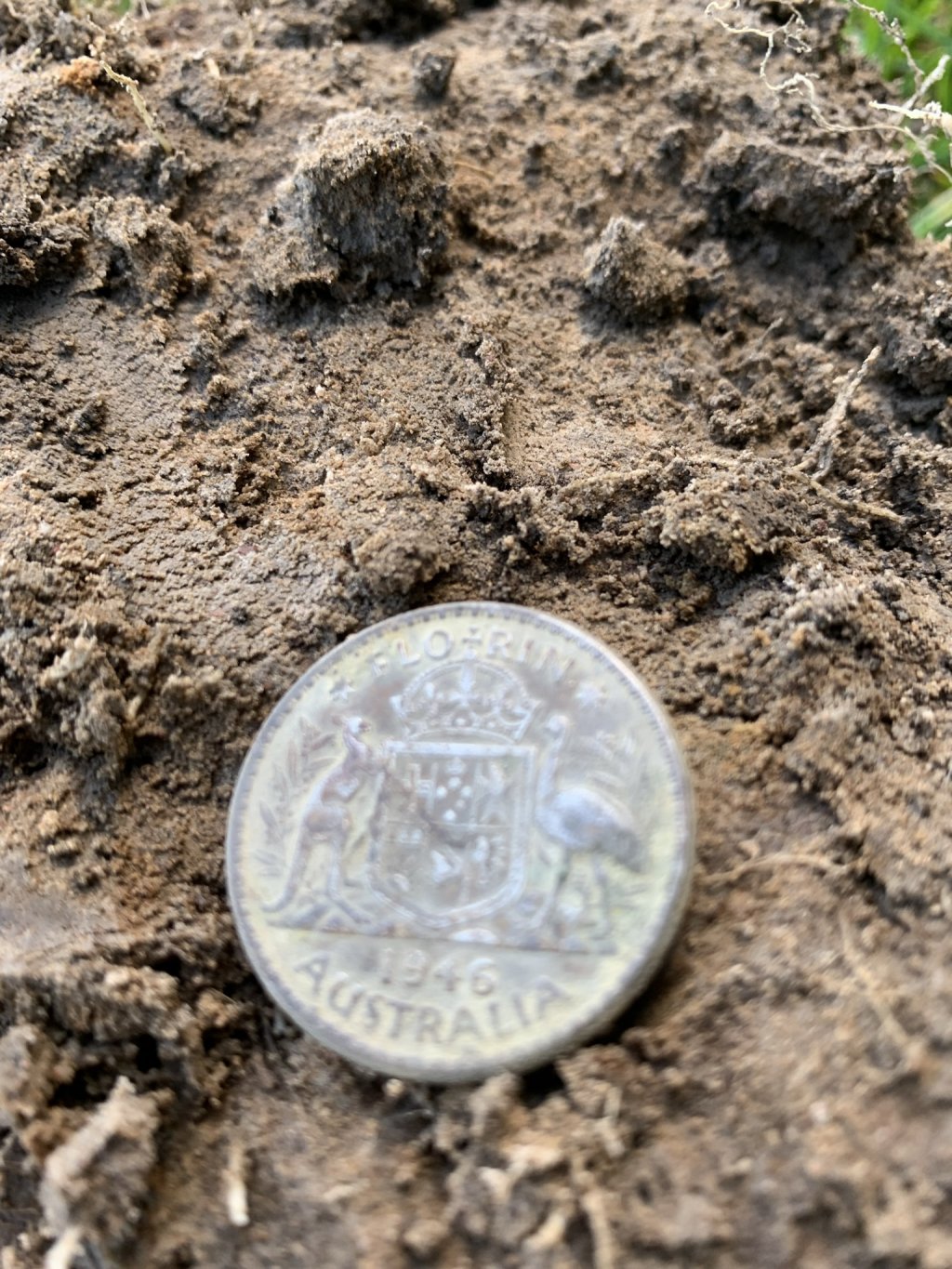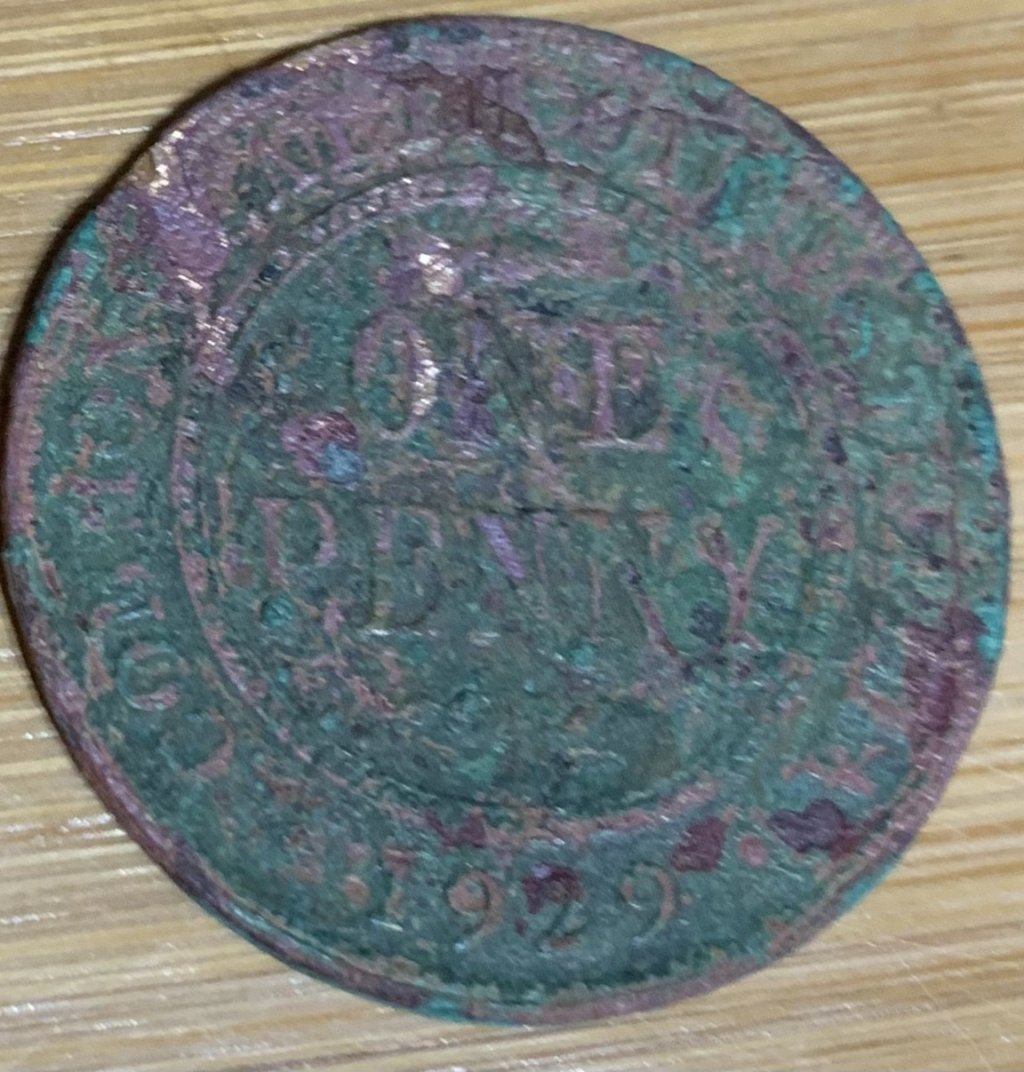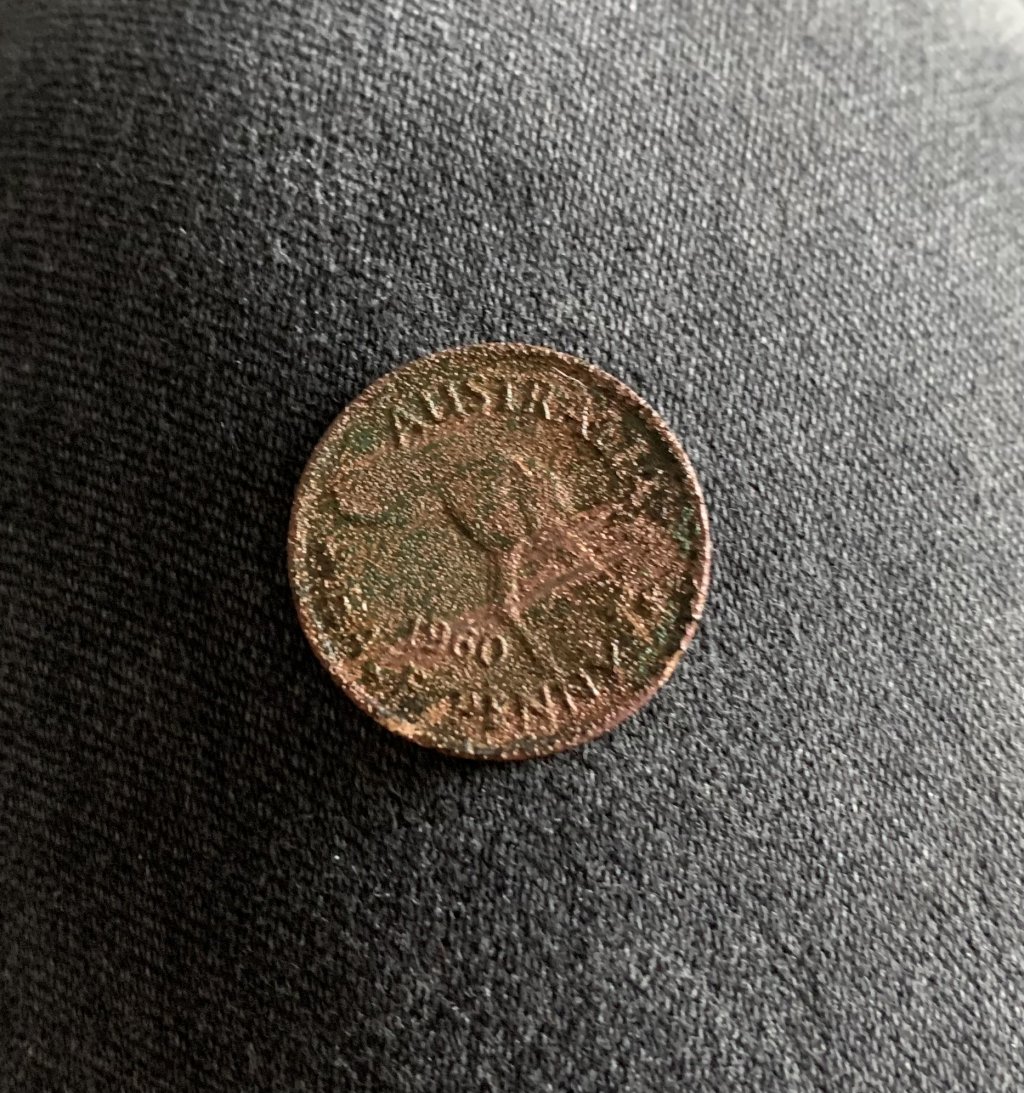-
Please join our new sister site dedicated to discussion of gold, silver, platinum, copper and palladium bar, coin, jewelry collecting/investing/storing/selling/buying. It would be greatly appreciated if you joined and help add a few new topics for new people to engage in.
Bullion.Forum

You are using an out of date browser. It may not display this or other websites correctly.
You should upgrade or use an alternative browser.
You should upgrade or use an alternative browser.
Went for a swing 2020
- Thread starter Eldorado
- Start date

Help Support Prospecting Australia:
This site may earn a commission from merchant affiliate
links, including eBay, Amazon, and others.
Nice collection well done. 
- Joined
- Jul 21, 2015
- Messages
- 1,799
- Reaction score
- 3,310



 Finally got out for a swing a couple of days ago.First target was a jumpy 21 to 27 signal on the Equinox,I almost didn’t dig it thinking it was canslaw.Glad I did because a Penny came out of the hole,after checking the hole with pinpointer there was something else in there.The photos tell the rest of the story,6 Pennies at 12 inches.4 Roo Pennies and 2 Comm.Pennies which were 1916 and 1929 ( that was close).Also found a nice 1946 Florin to round off the hunt.
Finally got out for a swing a couple of days ago.First target was a jumpy 21 to 27 signal on the Equinox,I almost didn’t dig it thinking it was canslaw.Glad I did because a Penny came out of the hole,after checking the hole with pinpointer there was something else in there.The photos tell the rest of the story,6 Pennies at 12 inches.4 Roo Pennies and 2 Comm.Pennies which were 1916 and 1929 ( that was close).Also found a nice 1946 Florin to round off the hunt.- Joined
- Jul 21, 2015
- Messages
- 1,799
- Reaction score
- 3,310
Had a spare couple of hours the other day so I went for a detector at a location I have detected many times before.Started picking up $1 and $2 coins which show as 21-23 on the Nox so decided to just sort of rush around concentrating on those numbers.Anyway a short while into the hunt I got another 21-23 which jumped to 24 acouple of times, usually when that happens it’s a piece of aluminium canslaw so I began to walk on and disregard the target;curiosity got the better of me and I went back determined to dig the target.Very pleased I did,upon flipping the plug and digging down about 8-10 inches the pinpointer detected the target and up came this beautiful little 7th LightHorse Regiment shoulder badge.Upon researching this Regiment it appears that they held a line just to the right of the ANZAC line.So whoever wore this badge was more than likely at Gallipoli.
A little information about the 7th LightHorse Regiment.
The 7th Light Horse Regiment was raised in Sydney in October 1914 from men who had enlisted in New South Wales, and became part of the 2nd Light Horse Brigade. Sailing from Sydney in late December 1914, the regiment disembarked in Egypt on 1 February 1915.
The light horse were considered unsuitable for the initial operations at Gallipoli, but were subsequently deployed without their horses to reinforce the infantry. The 2nd Light Horse Brigade landed in late May 1915 and was attached to the 1st Australian Division. The 7th Light Horse became responsible for a sector on the far right of the ANZAC line, and played a defensive role until it finally left the peninsula on 20 December 1915.
Back in Egypt, the 2nd Light Horse Brigade became part of the ANZAC Mounted Division and, in April 1916, joined the forces defending the Suez Canal from a Turkish advance across the Sinai Desert. It fought at the battle of Romani on 4 August, at Katia the following day, and was involved in the advance that followed the Turks’ retreat back across the desert.
The regiment spent late 1916 and early 1917 engaged on patrol work until the British advance into Palestine stalled before the Turkish bastion of Gaza. It was involved in the two abortive battles to capture Gaza directly (27 March and 19 April) and then the operation that ultimately led to its fall – the wide outflanking move via Beersheba that began on 31 October.
With the fall of Gaza on 7 November 1917, the Turkish position in southern Palestine collapsed. The 7th was involved in the pursuit that followed and led to the capture of Jerusalem in December. The focus of British operations then moved to the Jordan Valley. In early 1918 the 7th was involved in the Amman (24-27 February) and Es Salt (30 April-4 May) raids, and helped defeat a joint Turkish-German attack launched on the Jordan bridgehead around Musallabeh on 14 July.
The next major British offensive was launched along the coast in September 1918, and the 7th took part in a subsidiary effort east of the Jordan. It was part of the force that captured Amman on 25 September, which proved to be its last major engagement of the war; Turkey surrendered on 30 October 1918. The 7th Light Horse was employed one last time to assist in putting down the Egyptian revolt of early 1919, and sailed for home on 28 June.

A little information about the 7th LightHorse Regiment.
The 7th Light Horse Regiment was raised in Sydney in October 1914 from men who had enlisted in New South Wales, and became part of the 2nd Light Horse Brigade. Sailing from Sydney in late December 1914, the regiment disembarked in Egypt on 1 February 1915.
The light horse were considered unsuitable for the initial operations at Gallipoli, but were subsequently deployed without their horses to reinforce the infantry. The 2nd Light Horse Brigade landed in late May 1915 and was attached to the 1st Australian Division. The 7th Light Horse became responsible for a sector on the far right of the ANZAC line, and played a defensive role until it finally left the peninsula on 20 December 1915.
Back in Egypt, the 2nd Light Horse Brigade became part of the ANZAC Mounted Division and, in April 1916, joined the forces defending the Suez Canal from a Turkish advance across the Sinai Desert. It fought at the battle of Romani on 4 August, at Katia the following day, and was involved in the advance that followed the Turks’ retreat back across the desert.
The regiment spent late 1916 and early 1917 engaged on patrol work until the British advance into Palestine stalled before the Turkish bastion of Gaza. It was involved in the two abortive battles to capture Gaza directly (27 March and 19 April) and then the operation that ultimately led to its fall – the wide outflanking move via Beersheba that began on 31 October.
With the fall of Gaza on 7 November 1917, the Turkish position in southern Palestine collapsed. The 7th was involved in the pursuit that followed and led to the capture of Jerusalem in December. The focus of British operations then moved to the Jordan Valley. In early 1918 the 7th was involved in the Amman (24-27 February) and Es Salt (30 April-4 May) raids, and helped defeat a joint Turkish-German attack launched on the Jordan bridgehead around Musallabeh on 14 July.
The next major British offensive was launched along the coast in September 1918, and the 7th took part in a subsidiary effort east of the Jordan. It was part of the force that captured Amman on 25 September, which proved to be its last major engagement of the war; Turkey surrendered on 30 October 1918. The 7th Light Horse was employed one last time to assist in putting down the Egyptian revolt of early 1919, and sailed for home on 28 June.
- Joined
- Jan 27, 2015
- Messages
- 7,758
- Reaction score
- 12,866
Nice. That should go straight to the July FOM competition 
Similar threads
- Replies
- 10
- Views
- 4K
- Replies
- 103
- Views
- 27K














